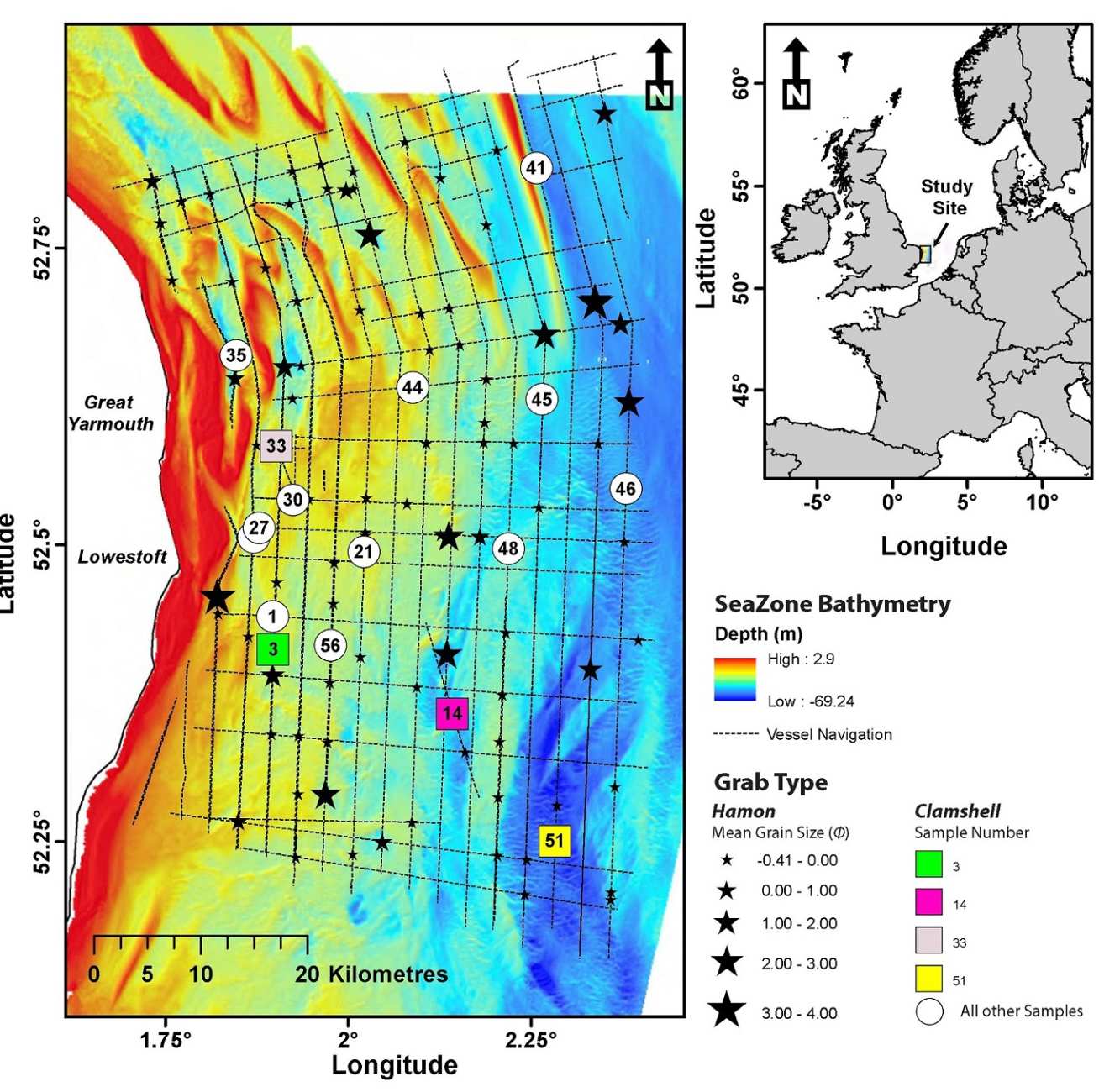Using acoustic backscatter to predict seabed biology
This project was run under the Marine Aggregate Levy Sustainability Fund Phase III (administered by CEFAS).
The final project report is here
The project involved a cross-disciplinary collaboration between myself and former post-doc Chris McGonigle, a marine biologist. We explore the link between acoustic backscatter, sediment grain size and micro-biology. Much of the previous work by others was limited as it used data either from the laboratory or from highly-constrained field experiments. Our aim was to use data from a typical cost-considered field monitoring program (Fig.1). We also deliberately used the latest commercial packages rather than in-house software, again to enhance the usefulness of the research for agencies and contractors who typically undertake this type of analysis. The research combined my expertise in the physics of backscatter with rigorous statistical analysis to provide a measure of confidence.

We first considered how to deal with acquisition challenges such as sonar beam patterns, ship track speed and sediment sampling methods. Next we tested a number of different algorithms to compare their performance. Somewhat surprisingly we found image-based methods as effective at predicting sediment grain size as more sophisticated angular-based methods. This showed that our understanding and correction of the angular response of sonars has much improved over the past 10 years or so, which makes the mapping more repeatable. Finally we present positive evidence for our ability to predict seabed community structure directly from the acoustic backscatter data.
Publications
McGonigle C, Collier JS, 2014, Interlinking backscatter, grain size and benthic community structure, Estuarine, Coastal and Shelf Science, Vol:147, ISSN:0272-7714, Pages:123-136 DOI